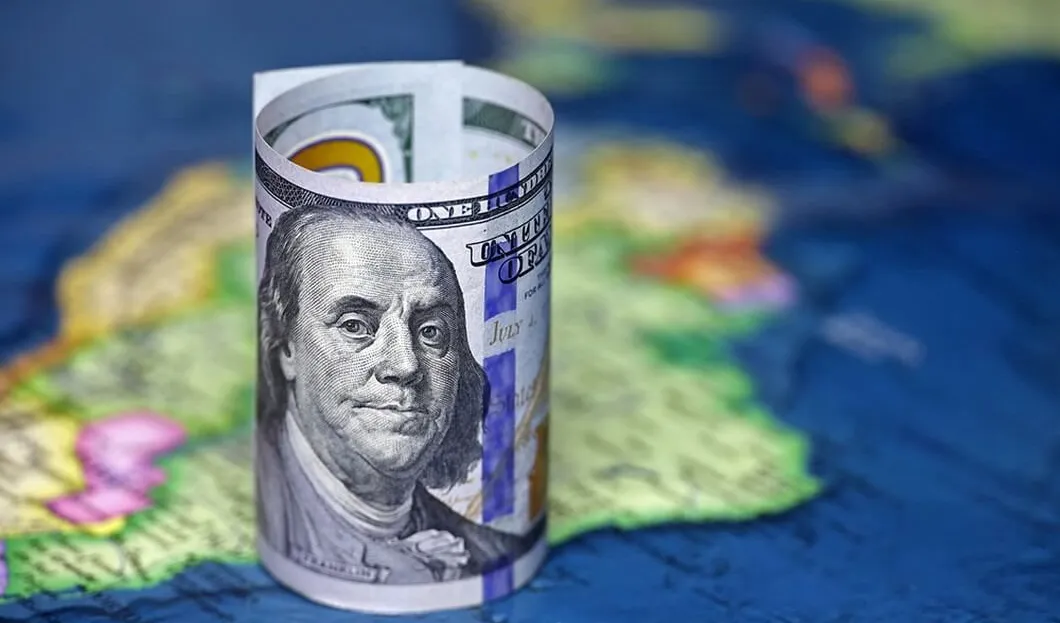
Tourism is back on a growth path, mainly in developed countries where the industry traditionally attracted millions of travelers and generated billions of dollars.
The World Travel & Tourism Council's (WTTC) economic trends report reveals that despite prolonged restrictions and travel requirements, the U.S. market maintains its leadership as the top destination for travelers and the most powerful in terms of revenue generation.
While reaffirming the U.S. market's post-pandemic ranking, the travel and tourism sector's contribution to the U.S. economy declined by $700 billion in 2019, and managed to contribute just under $1.3 trillion last year. In 2020, the contribution of tourism to the country's economy was reduced by 50%, equivalent to 4.9 trillion dollars.
Tourism revenues contributed 10.3% of the global gross domestic product worldwide and decreased by 5.3% in 2020 due to mobility restrictions. Research by Oxford Economics for WTTC reports a slight increase of over 6.1% in 2021, but many challenges remain.
The report stresses that prior to the pandemic, travel and tourism (including its direct, indirect and induced impacts) accounted for 1 in 4 new jobs created worldwide, 10.3% of all jobs (333 million) and 10.3% of global GDP (in the United States $9.6 trillion). Spending by international visitors was 1.8 trillion in 2019 and accounted for 6.8% of foreign exchange received from total exports.

The top three markets with the largest economic contribution produced by tourism are the United States, China in second place and Germany in third place. However, the report warns that even the international tourism movement registers negative numbers, and the greatest flow of visitors is from domestic travelers.
The WTTC report also states that efforts to open markets and eliminate barriers and requirements for travelers have helped business tourism to recover in the medium term.
The report shows the resilience of the travel and tourism sector, and reaffirms that the impact of travel restrictions around the world failed to stop the spread of the virus but did affect countries' economies.
"Despite a challenging macroeconomic environment, the travel and tourism industry has recovered. The world, with a few exceptions, is traveling again. And we are seeing a resurgence in business travel. Over the next 10 years, travel and tourism growth will outpace the global economy."
The data reveals that, in terms of the travel and tourism sector's contribution to GDP, China maintained its second position, with more than $814 billion, while Germany remained the world's third-largest travel and tourism sector, contributing $251 billion to that country's economy.
The United Kingdom fell sharply from fifth place in 2019 to ninth place in 2021, with a contribution of just over $157 billion, the largest drop of the top 10 countries in the WTTC ranking.
In terms of spending by international travelers, France, which before the pandemic ranked fourth, overtook Spain, China and the United States to take the top spot. International visitors spent more than US$42.9 billion in France last year. In the United States the tourism revenues reached 40.3 billion dollars, and in Spain 34 billion dollars.
China, which remains closed to much of the rest of the world, ranked second before the pandemic, but fell sharply to 11th in 2021 in the international traveler spending category to close 2021 with revenues of $14 billion.
In Pacific Asia, major travel and tourism markets such as Thailand and Japan experienced huge losses in international spending, resulting in both markets, in fifth and eighth place respectively before the pandemic, falling out of the top 20 in 2021.
According to predictions, worldwide business travel is expected to grow by more than 41% this year. For the next 10 years, it predicts that business travel could grow by an average of 5.5% annually and may return fastest in the Asia-Pacific region.
It’s predicted that by 2032, China could overtake the United States to become the world's largest travel and tourism market.
The research shows that the contribution of China's travel and tourism sector to GDP could reach $3.9 trillion by 2032, making it the world's most powerful travel and tourism market, and India could overtake Germany to reach the third place with a projected value of $457 billion.
The World Travel & Tourism Council details that after a dramatic drop of 45.5% in 2020, tourism's contribution to the gross domestic product of the Americas as a whole recovered by 23.1% in 2021, and showed positive figures faster than the world average increase of 21.7%.
In absolute terms, the travel and tourism revenues contributing to the continent's GDP increased from US$1.447 billion in 2020 to US$1781 billion in 2021.
As a result, the share of travel and tourism GDP in the total economy increased marginally from 5% in 2020 to 5.9% in 2021. This relatively strong recovery has helped the Americas maintain its position as the region with the highest Travel & Tourism contribution to GDP.
The industry is indicated to generate 2.7 million new jobs in the region in 2021, with the number of people employed in the sector increasing 8.6% to 34.6 million. It is estimated with this that 1 in 12 jobs was supported by the travel and tourism sector. Despite the strong recovery, Travel & Tourism's contribution to GDP in 2021 was 33% below pre-pandemic levels.
At the sub-regional level, the recovery rate of Caribbean Travel & Tourism (36.6%) was stronger than that of Latin America (26.5%) and North America (22.3%).
With a recovery rate of 22%, the United States, according to the report, maintained its position as the world's largest travel and tourism sector, with a contribution of $1.27 trillion to the U.S. economy.
The sector's contribution represented 13.1% of Mexico's total GDP - the largest share among G20 countries. The fastest recovery rates were observed in St. Lucia, the Bahamas and Colombia; these tourism industries recovered by 92.6%, 88.9% and 83.8%, respectively. The recovery of Travel & Tourism in the Americas was supported more by a rebound in receipts from domestic travelers rather than international travelers, with the former increasing by 28.8% while the latter grew by 15.1%.










